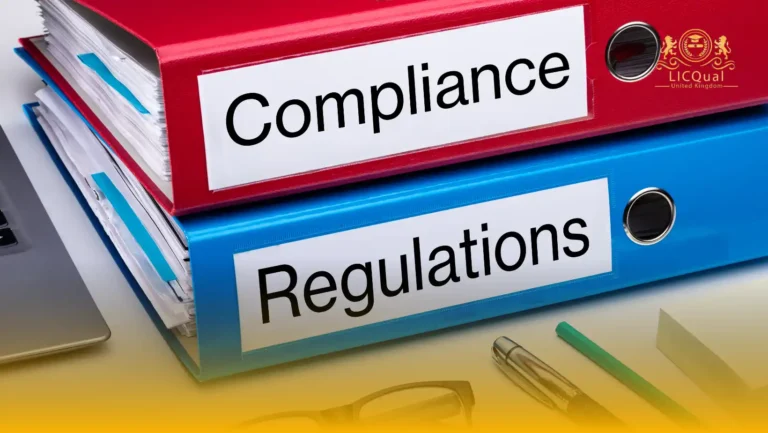The LICQual Level 3 Certificate in Rigger is a highly respected qualification designed for experienced riggers aiming to advance their technical expertise and leadership capabilities in complex lifting operations. This advanced-level certification is internationally recognized and aligns with global standards for safe, competent, and effective rigging practices. It prepares professionals to take on supervisory and senior rigging roles across industries such as construction, offshore drilling, oil and gas, heavy engineering, and maritime logistics.
This comprehensive program focuses on the advanced knowledge and skills required to manage high-risk and technically demanding lifting tasks. Learners will gain a deep understanding of lifting theory, engineering controls, equipment dynamics, and safety legislation applicable to lifting operations. With a strong emphasis on risk assessment, method statements, and operational planning, participants will be equipped to assess lifting scenarios and implement safe systems of work effectively.
Throughout the course, learners will explore advanced rigging topics such as load calculations, lifting point assessments, center of gravity, sling angle forces, and working with multiple cranes or complex lifting devices. The training also covers inspection and maintenance of lifting equipment, ensuring that learners can verify equipment integrity and suitability before any operation. This enhances not only safety but also the efficiency and reliability of lifting projects under their supervision.
One of the core strengths of the LICQual Level 3 Certificate in Rigger is its focus on leadership and coordination. Participants will learn how to lead rigging teams, communicate with crane operators, slingers, lifting supervisors, and engineers, and ensure that everyone involved in a lifting operation understands their role and responsibilities. Clear communication and strong decision-making are vital skills for those managing lifting teams, and this course provides the knowledge base to lead confidently in complex environments.
The qualification also aligns with international safety legislation, such as LOLER (Lifting Operations and Lifting Equipment Regulations), PUWER (Provision and Use of Work Equipment Regulations), and other globally accepted lifting standards. By the end of the course, learners will be capable of identifying hazards, mitigating risks, and ensuring that all lifting activities meet both legal and organizational compliance standards.
In conclusion, the LICQual Level 3 Certificate in Rigger is the ideal course for those looking to elevate their careers in rigging and lifting operations. It offers the technical depth, practical insight, and leadership focus needed to succeed in high-risk industries. Whether working offshore, on megaprojects, or in industrial settings, this certificate validates a professional’s capability to plan, execute, and supervise complex lifting tasks safely and efficiently. It is an essential credential for those who aim to reach the top tiers of the rigging profession.
Course Overview
Qualification Title
LICQual Level 3 Certificate in Rigger
Total Units
6
Total Credits
24
GLH
120
Qualification #
LICQ2200191
Qualification Specification
To enroll in the LICQual Level 3 Certificate in Rigger, applicants must meet the following criteria:
|
Qualification# |
Unit Title |
Credits |
GLH |
|---|---|---|---|
|
LICQ2200191-1 |
Advanced Rigging Equipment |
4 |
20 |
|
LICQ2200191-2 |
Safe Rigging Practices |
4 |
20 |
|
LICQ2200191-3 |
Rigging Load Calculation |
4 |
20 |
|
LICQ2200191-4 |
Working with Cranes and Hoists |
4 |
20 |
|
LICQ2200191-5 |
Rigging Communication Systems |
4 |
20 |
|
LICQ2200191-6 |
Project Planning and Supervision |
4 |
20 |
By the end of this course, learners will be able to:
Advanced Rigging Equipment
- Identify and describe advanced rigging equipment and tools used in complex rigging operations.
- Understand the different types of rigging gear (such as hoists, winches, and lifting beams) and their specific applications.
- Demonstrate the ability to select and use advanced rigging equipment based on the load, environment, and task requirements.
- Recognize the importance of regular inspection, maintenance, and testing of advanced rigging equipment to ensure safety and efficiency.
Safe Rigging Practices
- Understand the principles of safe rigging practices and their application in complex lifting scenarios.
- Identify potential hazards and risks associated with rigging operations and how to mitigate them.
- Demonstrate the ability to follow safety protocols and industry standards to ensure the safety of rigging personnel and equipment.
- Apply safe rigging practices when handling different types of loads and operating in diverse work environments.
Rigging Load Calculation
- Understand the principles behind calculating load weight, center of gravity, and load distribution.
- Perform accurate load calculations to determine the necessary rigging equipment and setup.
- Apply knowledge of load-bearing capacities and safety factors when planning rigging operations.
- Demonstrate the ability to calculate the correct rigging configuration for lifting and securing heavy or irregularly shaped loads.
Working with Cranes and Hoists
- Understand the principles of crane and hoist operations in relation to rigging.
- Demonstrate knowledge of the various types of cranes and hoists used in lifting operations and their specific functions.
- Apply safe practices when working with cranes and hoists, including proper rigging techniques, signaling, and coordination with operators.
- Recognize and address potential issues and challenges when working with cranes and hoists in real-world rigging operations.
Rigging Communication Systems
- Understand the importance of effective communication in rigging operations to ensure safety and efficiency.
- Demonstrate proficiency in using standard signaling methods, including hand signals, radio communication, and visual aids.
- Develop the ability to coordinate with crane operators, rigging teams, and other personnel involved in lifting operations.
- Apply proper communication systems to avoid miscommunication, reduce risk, and ensure smooth rigging operations.
Project Planning and Supervision
- Understand the key principles of planning and supervising rigging projects, including timeline management and resource allocation.
- Demonstrate the ability to create a detailed rigging plan that accounts for all variables such as load types, safety protocols, and team roles.
- Develop the skills to supervise rigging teams effectively, ensuring that all tasks are completed safely, efficiently, and in compliance with regulations.
- Apply project management skills to oversee large-scale rigging operations, ensuring that all steps are completed within the scope, budget, and timeline.
This diploma is ideal for:
Assessment and Verification
All units within this qualification are subject to internal assessment by the approved centre and external verification by LICQual. The qualification follows a criterion-referenced assessment approach, ensuring that learners meet all specified learning outcomes.
To achieve a ‘Pass’ in any unit, learners must provide valid, sufficient, and authentic evidence demonstrating their attainment of all learning outcomes and compliance with the prescribed assessment criteria. The Assessor is responsible for evaluating the evidence and determining whether the learner has successfully met the required standards.
Assessors must maintain a clear and comprehensive audit trail, documenting the basis for their assessment decisions to ensure transparency, consistency, and compliance with quality assurance requirements.







